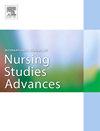Nudging in the nursing home: A qualitative interpretive study
IF 3.1
Q1 NURSING
International Journal of Nursing Studies Advances
Pub Date : 2024-12-29
DOI:10.1016/j.ijnsa.2024.100287
引用次数: 0
Abstract
Background
Nudging involves deliberately changing the environment or context to induce better choices. Several studies consider such methods unethical manipulation that threatens the principles of informed consent and autonomy, which are particularly vital in healthcare. Others argue that nudging respects personal freedom because it is not in conflict with the person's explicit values or choices, beneficial, and easy to resist. Additionally, studies argue that such strategies are legitimate as they can prevent more intrusive forms of paternalism. Given the increasing prevalence of soft paternalism through nudging, there is a need to examine its use in healthcare.
Objective
This study explored the phenomenon of nudging in a nursing home context.
Design
A qualitative interpretive design informed by Gadamer's hermeneutics was employed.
Setting
Three distinct nursing home units in Norway, including long-term, dementia, and rehabilitation units. The study was conducted between December 7th. 2019 and July 2nd. 2020.
Participants
Individuals involved in the units during the observation period.
Methods
Seven to eight weeks of observations, followed by interviews with caregivers (nurses and auxiliary nurses), two occupational therapists, and two physiotherapists.
Results
The results suggest that nudging in this context can be understood across three themes: modification of physical surroundings, information and interaction, and ambiguous interventions.
Conclusions
Nudging is being used in nursing homes to guide residents’ choices and behaviors to foster their well-being and uphold social norms. However, caregivers are also navigating the use of diverse forms of influence, including subtle nudging and assertive persuasion, and must consider complex factors.
Registration number
REK – Regional ethics committee case number 175774
Sikt - Norwegian Agency for Shared Services in Education and Research case number 248550.
Social media abstract
Experienced caregivers in nursing homes effectively use nudging to guide care routines, resulting in efficient care and better interactions.
疗养院中的轻推:一项定性解释研究。
背景:轻推包括故意改变环境或背景,以诱导更好的选择。一些研究认为这种方法是不道德的操纵,威胁到知情同意和自主的原则,这在医疗保健中尤为重要。另一些人则认为,轻推尊重个人自由,因为它与个人明确的价值观或选择不冲突,有益,而且容易抗拒。此外,研究表明,这些策略是合理的,因为它们可以防止更多形式的家长式作风。鉴于通过轻推的软家长作风越来越普遍,有必要检查其在医疗保健中的使用。目的:探讨疗养院环境下的轻推现象。设计:采用伽达默尔解释学的定性解释设计。环境:挪威三个不同的养老院单位,包括长期、痴呆和康复单位。该研究于12月7日进行。2019和7月2日。2020.参与者:观察期间参与单位的个人。方法:进行7 ~ 8周的观察,随后与护理人员(护士和辅助护士)、2名职业治疗师和2名物理治疗师进行访谈。结果:结果表明,在这种情况下,轻推可以通过三个主题来理解:物理环境的改变,信息和互动,以及模糊的干预。结论:在养老院中,轻推正在被用来指导居民的选择和行为,以促进他们的福祉和维护社会规范。然而,护理人员也在使用各种形式的影响,包括微妙的轻推和自信的说服,必须考虑复杂的因素。注册编号:REK -区域伦理委员会案件编号175774Sikt -挪威教育和研究共享服务机构案件编号248550。摘要:养老院经验丰富的护理人员有效地使用轻推来指导护理程序,从而实现高效的护理和更好的互动。
本文章由计算机程序翻译,如有差异,请以英文原文为准。
求助全文
约1分钟内获得全文
求助全文
来源期刊

International Journal of Nursing Studies Advances
Nursing-General Nursing
CiteScore
5.80
自引率
0.00%
发文量
45
审稿时长
81 days
 求助内容:
求助内容: 应助结果提醒方式:
应助结果提醒方式:


